Somewhere beyond the reach of certainty, Greenland waits. A country of survivalists, its story is one of monsters and myths, where nature still writes the rules.
Less than 50 kilometres off the coast of Ilulissat, we encounter our first giant. Rising from the turquoise depths of Disko Bay, the towering beast lifts a pale white shoulder to the sky. The mass of fractured blues and ghostly whites rises up to swallow the sun and a heavy blanket of darkness washes over our vessel.
We scurry from one side of our rickety boat to the other, pushing closer, eager to catch a glimpse of the ancient figure in motion. Around us, the sound of splintering ice cracks like weathered bones. Cameras click. The sputtering engine of our ageing charter boat drones on. And then, all of a sudden, silence.
An eerie calm falls over our boat. With the engine now off, we drift freely towards the towering giant that stands just out of reach. Icebergs of this size and scale, I think to myself, are almost beyond the limits of imagination. No photograph prepares you, no second-hand story could possibly convey the sheer enormity of these true marvels of nature. And just as I start to lose myself in thought, a voice from behind speaks up.
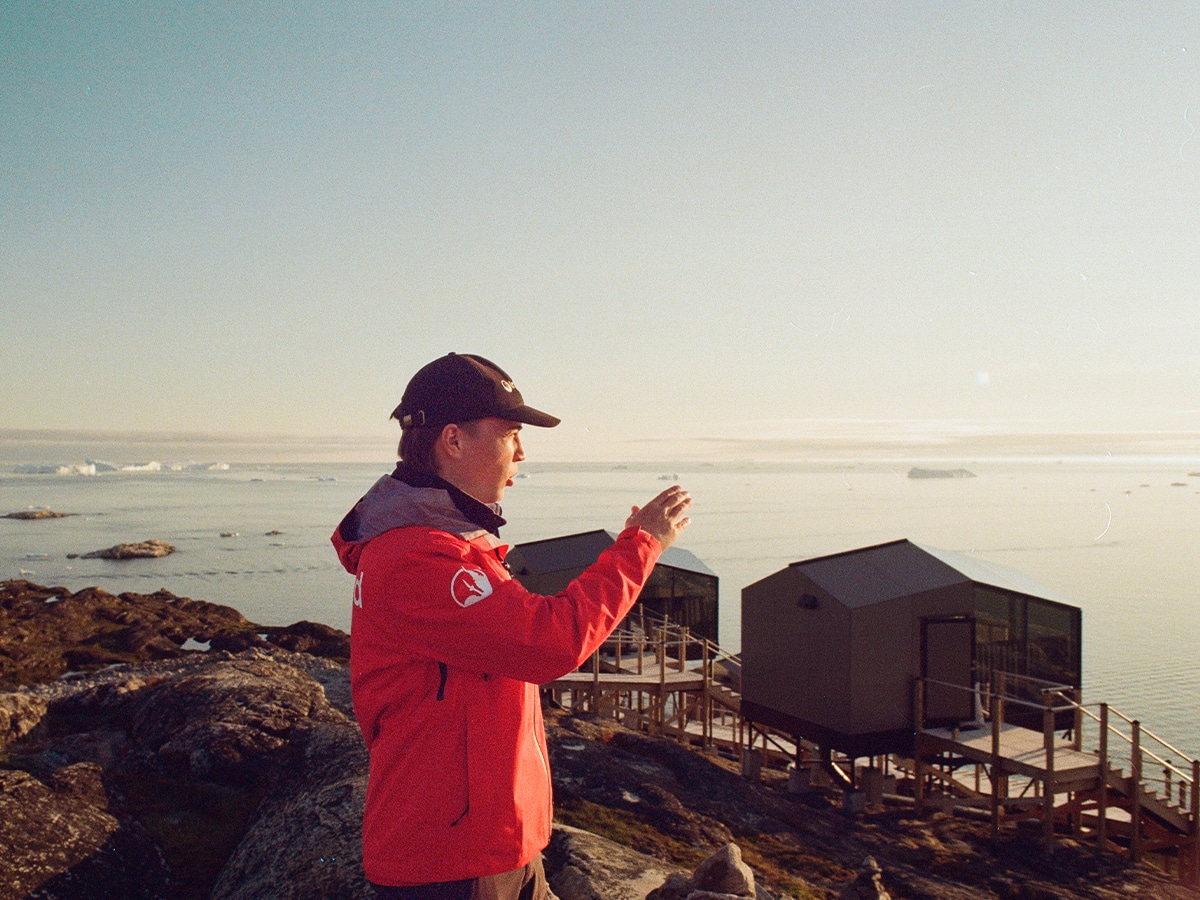
“When my dad was a boy, they would drive cars from Ilulissat to Qeqertarsuaq, but now you can’t do that,” our guide Niels Arkaluk Heilmann calmly explains, his eyes never deviating from the iceberg in front of us. “Even when I was younger, we could dog sled on the ice, but it’s becoming too dangerous.”
At just 24, Niels has lived a remarkable life. A proud Greenlandic person from the country’s brutal North, the travel guide has traversed these delicate waters since he was a child, first as a tour operator and then as a boat skipper. Niels knows the strait from Ilulissat to Qeqertarsuaq like the back of his hand, but even he acknowledges that, as breathtaking as this region can be, you need to pay nature its respect.
“We are an adaptive culture. We are real survivalists.”
“We live in a very tough part of the world, and our culture has very much developed to facilitate the difficulties of living in Greenland,” he tells me. “Here, time is a bit fluid. When you say two hours, it’s usually more like three or four. Our language is based on that. We don’t have any terministic greetings. We don’t say see you later, as that has a definitive point of meeting. What we say is ‘Hope to see you later’ because things are always unpredictable.”
Niel’s words feel less like a story and more like a lesson; a harsh truth to the realities of survivalism in a place like Greenland. But as I have come to learn over my time in this rugged Arctic terrain, beauty and brutality can often be one and the same.
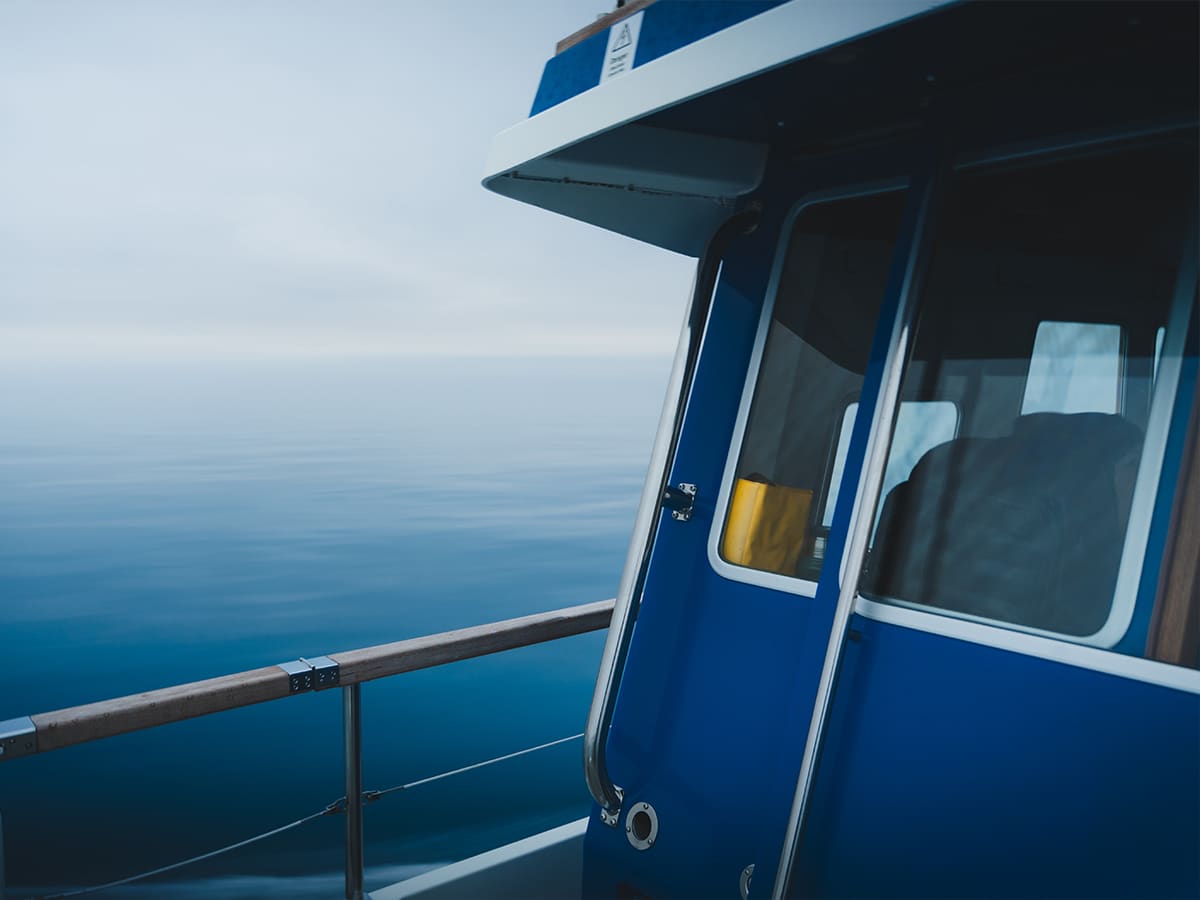
Taboos & Legends
Greenland has always lived with giants and monsters. A culture woven with legends and taboos, Greenlandic life is predicated on the concept of community. When survivalism is the ultimate goal, the settlement is only as strong as its weakest link.
That very thought replays in my mind as I watch our herd of journalists wander lazily through the streets of Nuuk, en route to the Lokalmuseum. Some storm ahead, others fall behind, distracted by the quaint, colourful houses and chained-up sled dogs. A tight-knit unit, we are not, and I shudder to think how we would fare in more difficult conditions.
I’m one of a handful of explorers undertaking what should be Intrepid Travel’s first land-based expedition to the seldom-visited region. Technically, the Australian experiences company did launch a Greenland tour back in 2020, but just two weeks into the endeavour, global travel restrictions took the wind out of the project’s sails. Five years later, and amidst very different economic and geopolitical conditions, Intrepid has returned to Greenland.
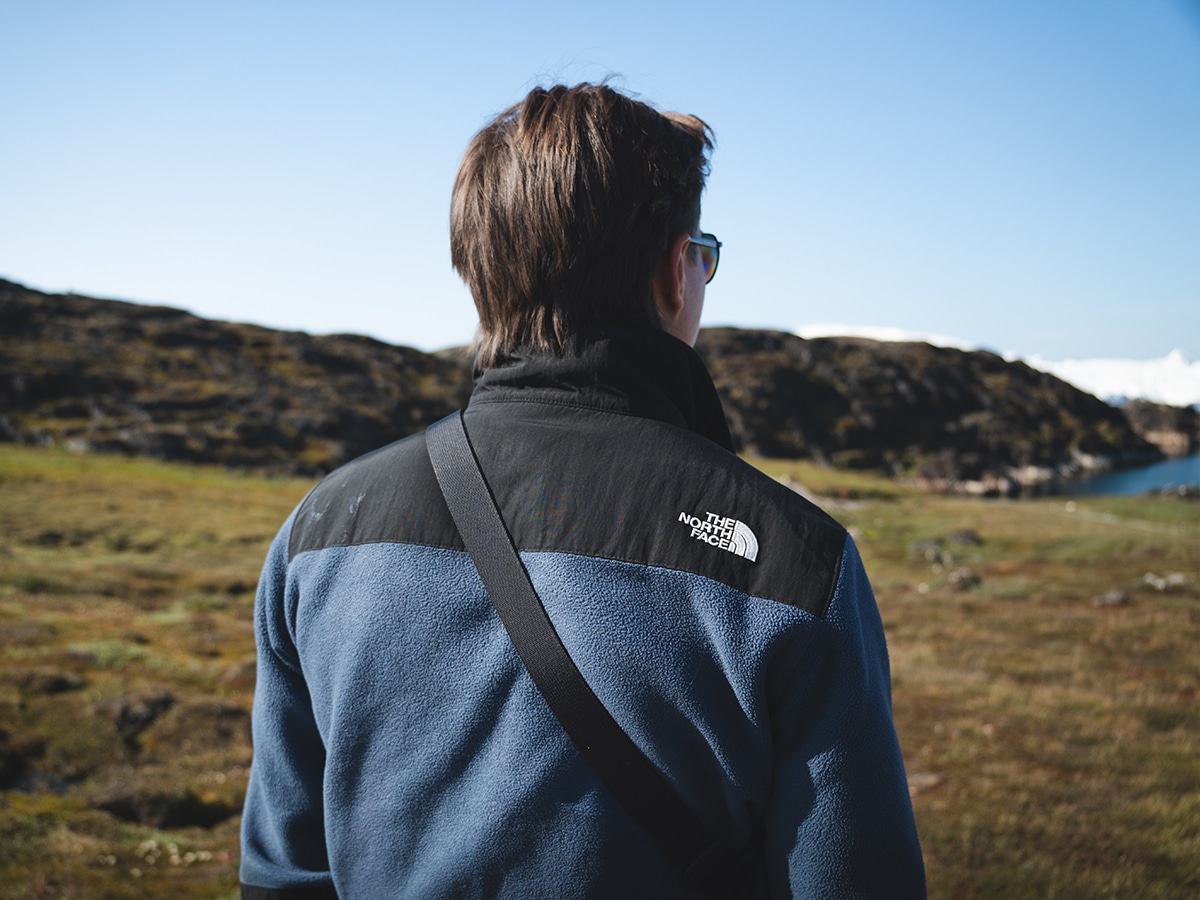
“You need to be strong together,” Niels tells me when I ask about the community approach. “That’s a concept that has been built over thousands of years. The Inuit culture is at least 9,000 years old, starting in the Arctic, back in Siberia and Alaska.”
As Niels explains, the semi-nomadic Inuit, who form the majority of the country’s population, have survived in this rugged, isolated territory for centuries by abiding by a strict set of rules and guidelines. Not governed by law, but by elders and community leaders, survival came via storytelling.
Taboos and legends passed from elders to children served as an unwritten almanac: warnings about when to hunt, where not to fish, and how to live in harmony with the spirits of land and sea. To the seafaring people of Greenland, none is more important than that of Sassuma Arnaa, the Mother of the Sea.
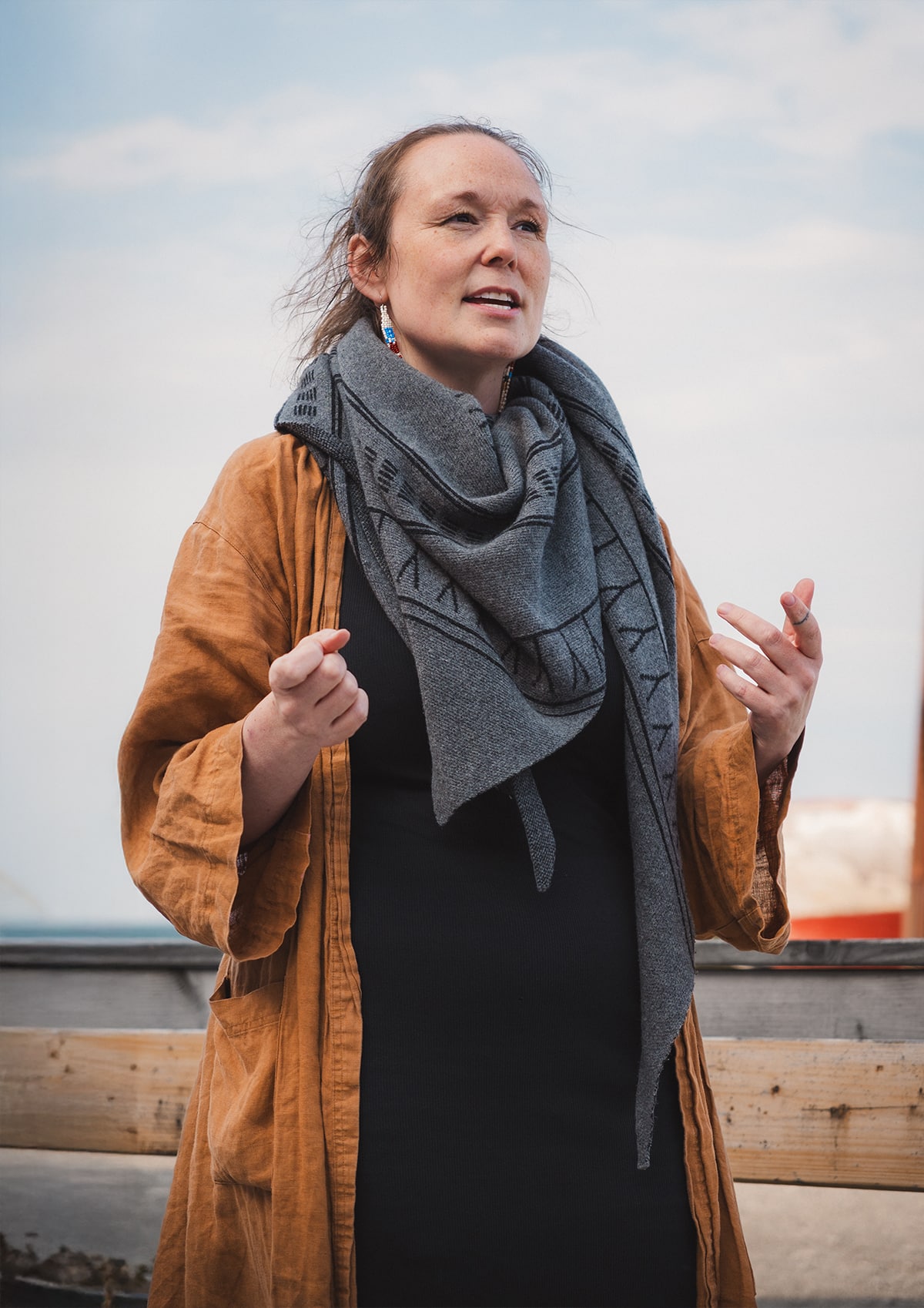
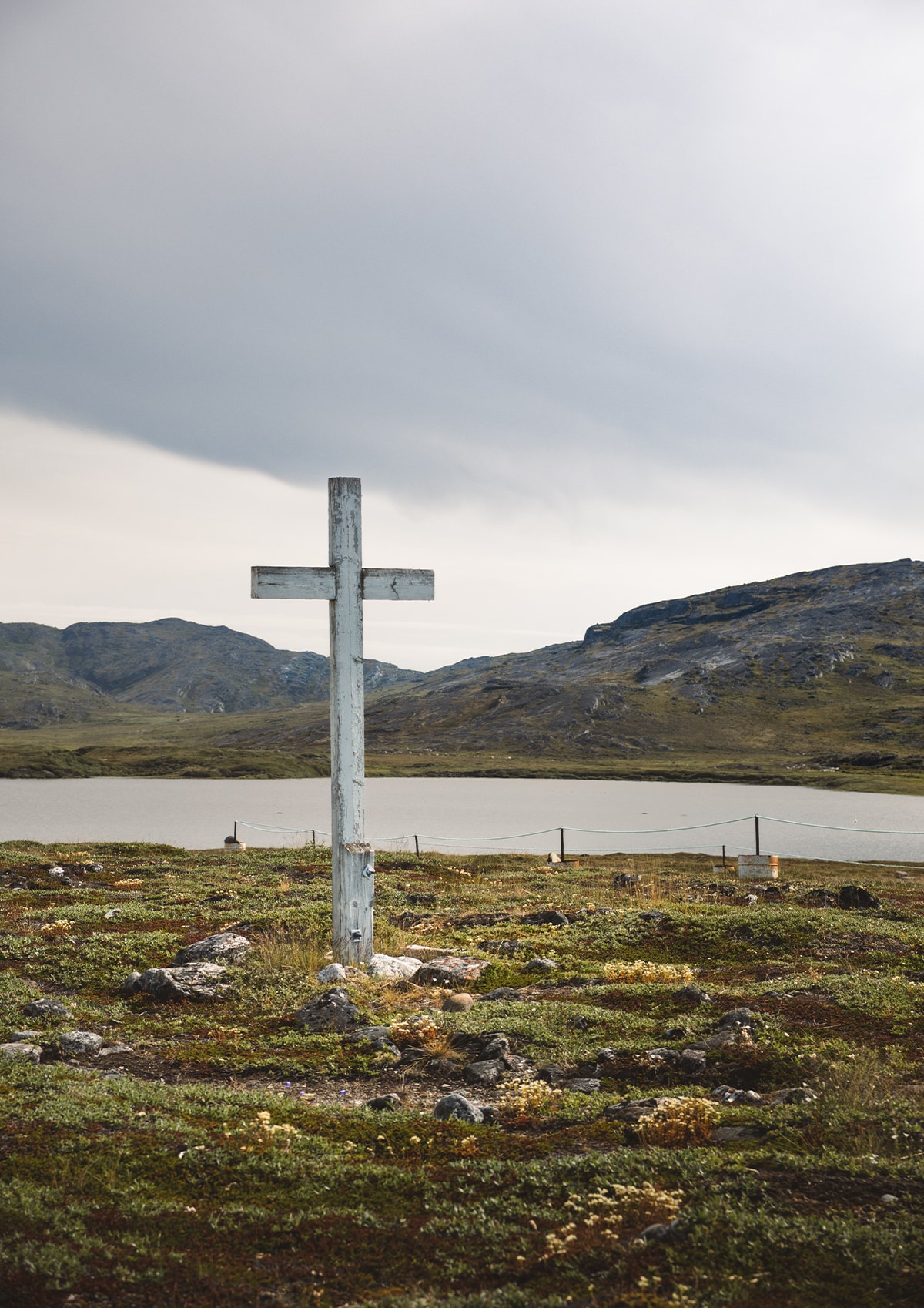
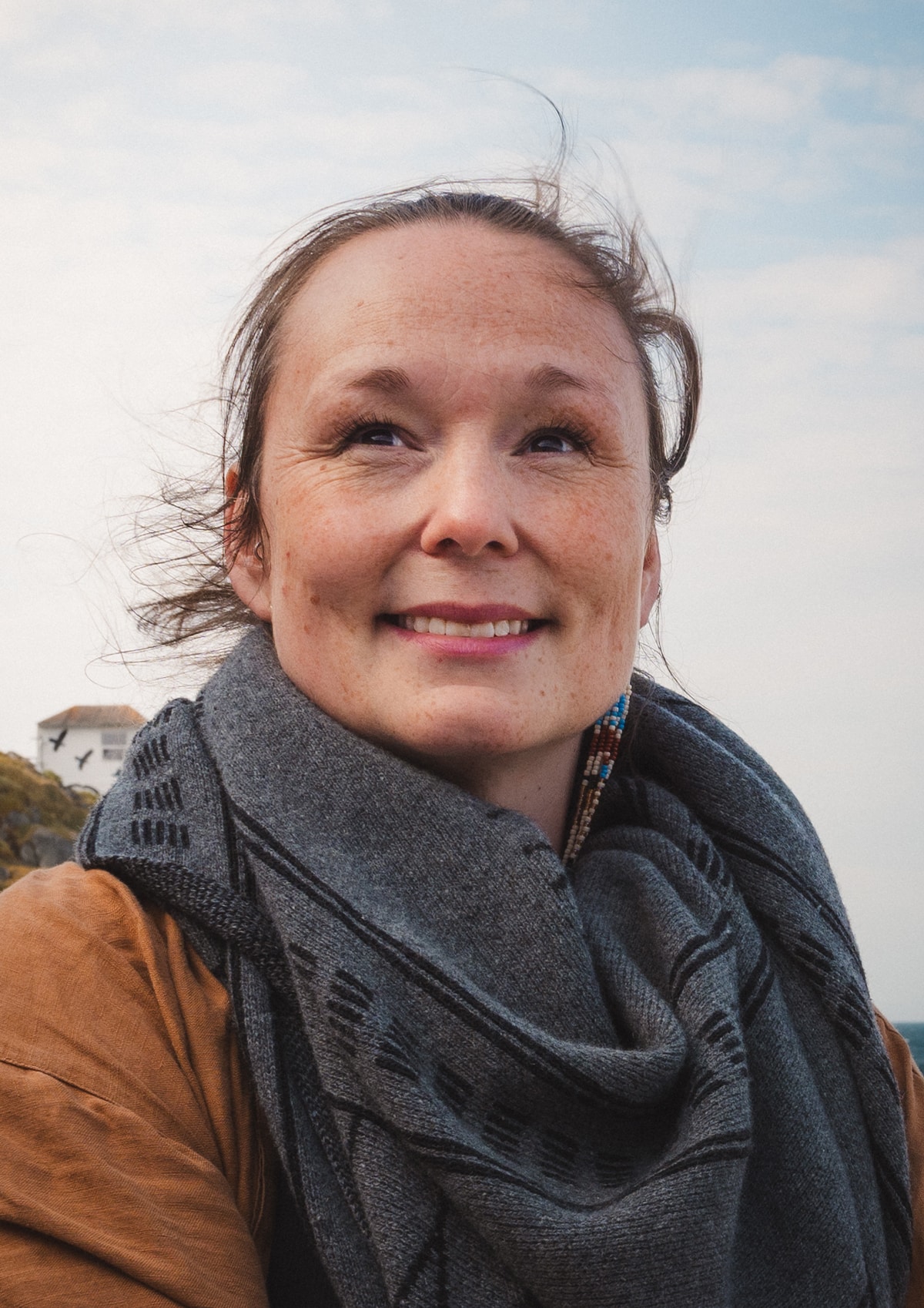
It is said that when taboos are broken, the powerful spirit’s hair becomes tangled, ensnaring sea animals and depriving the community of food. To restore balance, a shaman (Angakkuq) must descend in trance to cleanse her hair and uncover the community’s wrongs. Failure to do so may cause the entire community to suffer.
“When we meet people from the rest of the world, especially Europe, we often talk about how they have an idea of Mother Nature as this gentle little woodland elf frolicking in the field,” Ujammiugaq Engell, a historian and leader of the Nuuk Lokalmuseum, tells me. “Our version, often depicted by Mother of the Sea, she’s a raging, ferocious monster who is not only trying to, but is also happy to kill you if you don’t calm down. I love that.”
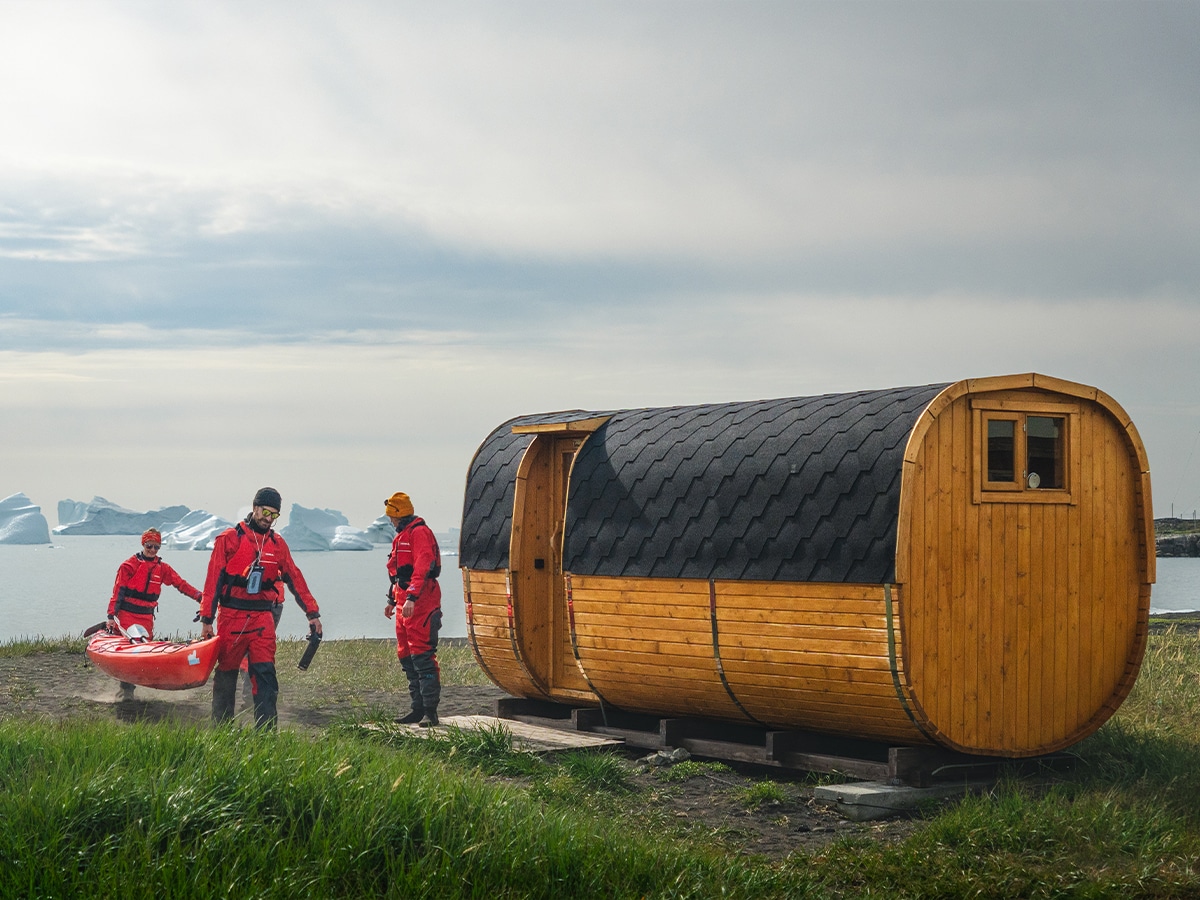
Adventure
Two days later, Ujammiugaq’s words weigh heavily on my mind. I’m in a two-person kayak, trying to figure out how the foot pedals work and tentatively spinning in circles while AJ, the co-captain of our vessel, hurls light but entirely warranted insults at me.
“What are you doing, man? You’re going to make us flip.”
She’s right, I have no idea what I’m doing. We’re only about five metres off the black sand beach of Qeqertarsuaq, and I’ve already lost a glove, dropped my camera, and smacked her in the back with my paddle. This isn’t exactly the ferocious sea that Ujammiugaq warned me of, but even in these calm waters, I’m struggling to get a grip of the situation.
I rock the kayak from side to side, ice-cold water spilling over the edges and seeping into our hypercolour wetsuits. As if on cue, Niels glides past us gracefully, big toothy grin on his face.
Eventually, I figure it out. The rudder drops, and I’m free to navigate us through the unnervingly calm, black sea. We paddle out into the open water. All around us, a familiar sound. Compressed air bubbles inside the floating sea ice fizz and pop, our kayak resting atop like a garnish on a champagne cocktail.
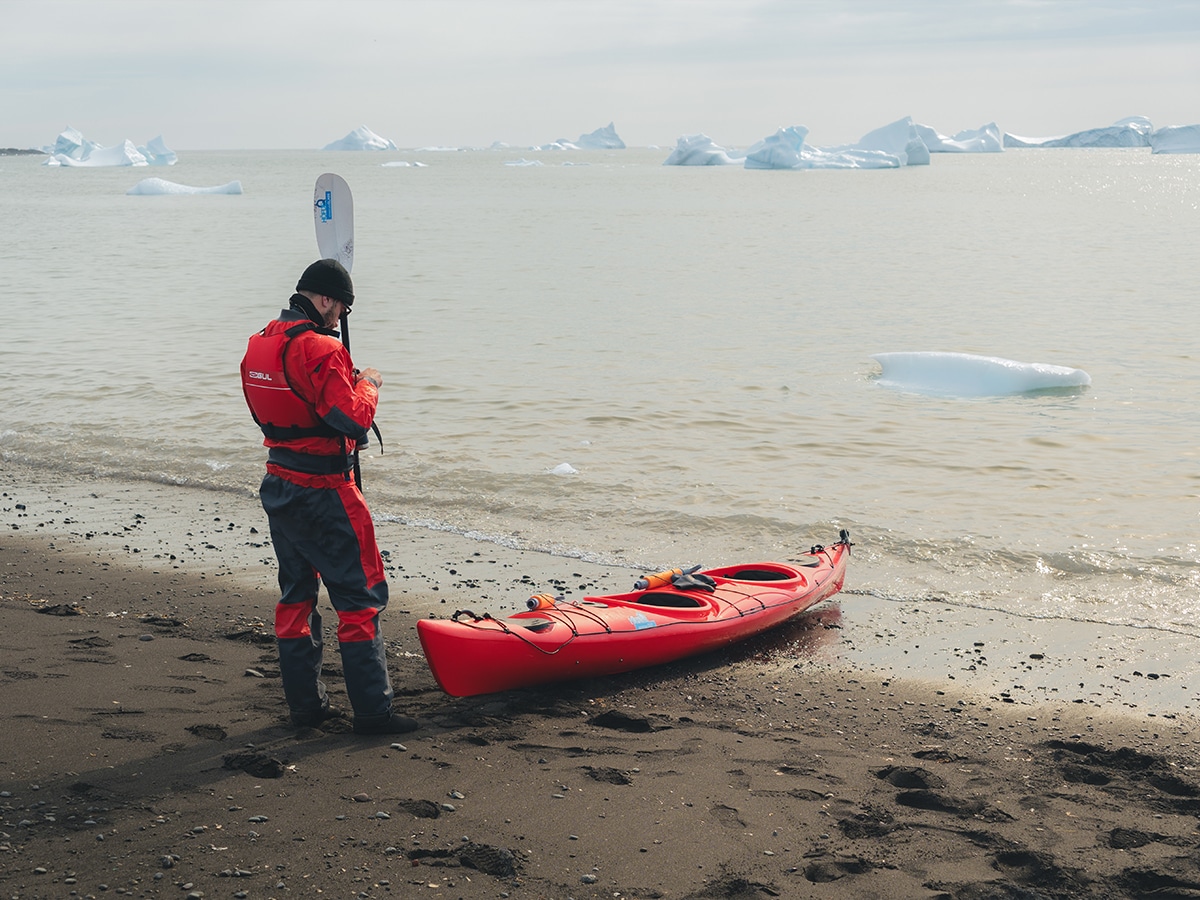
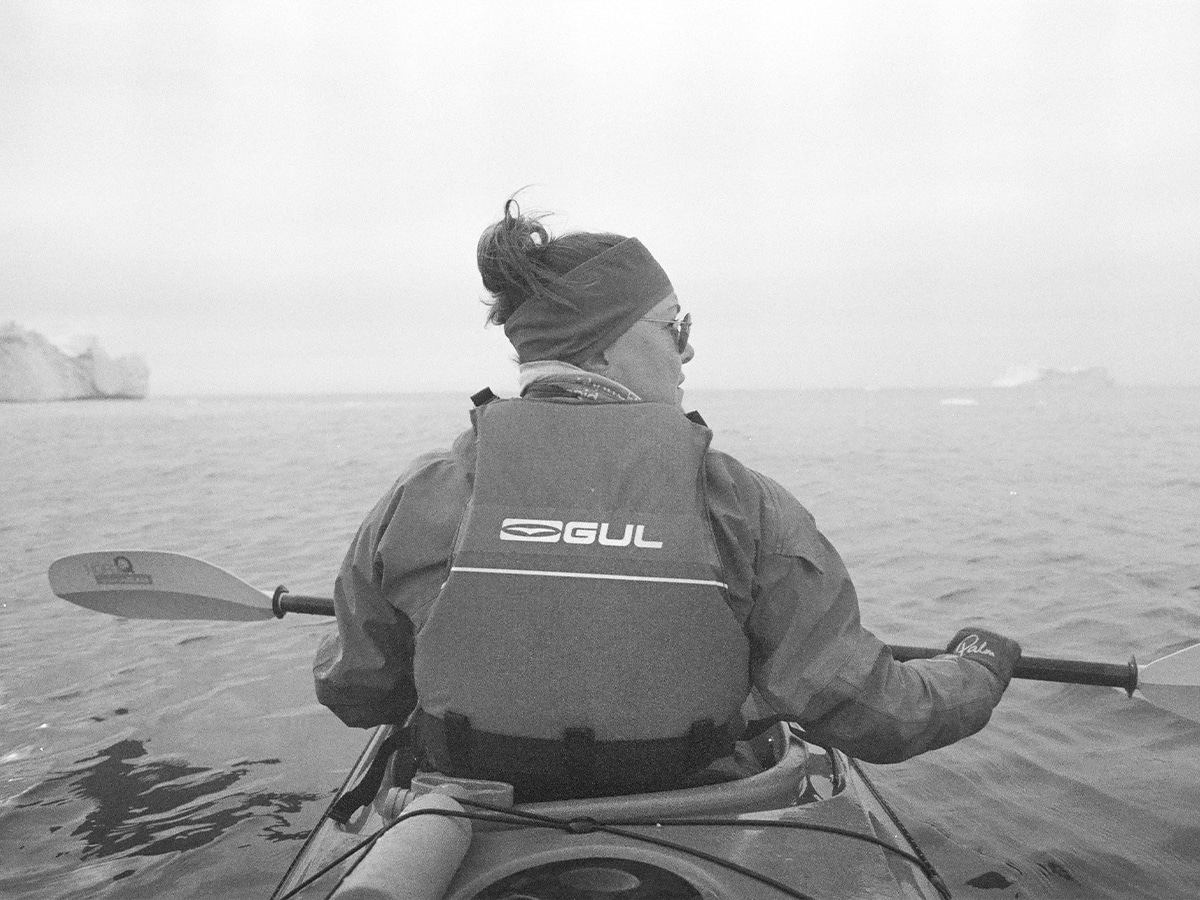

In front of us, another giant. A heaving iceberg, as tall as the eye can see, cuts a blinding white contrast against the dark water below. The hulking masses of ice, some of which stem from glaciers formed thousands of years ago, are breathtaking, beautiful and incredibly deadly. They crack and roll continuously, and it’s only when they move that you catch a glimpse of just how enormous they really are. Cliché though it might sound, what you see really is just the tip.
We skirt around the icebergs for a few hours, taking it all in before heading to shore for lunch: a hefty serve of fresh halibut and vegetables. In Greenland, fishing is a major source of income and, by association, a large part of the local diet. Outside of that, you can expect to find Musk Ox and reindeer on most menus, both gamey meats that offer a healthy dose of iron. For the more adventurous, whale and seal are regular delicacies in Greenland, subject to strict hunting conditions and cultural protocols.
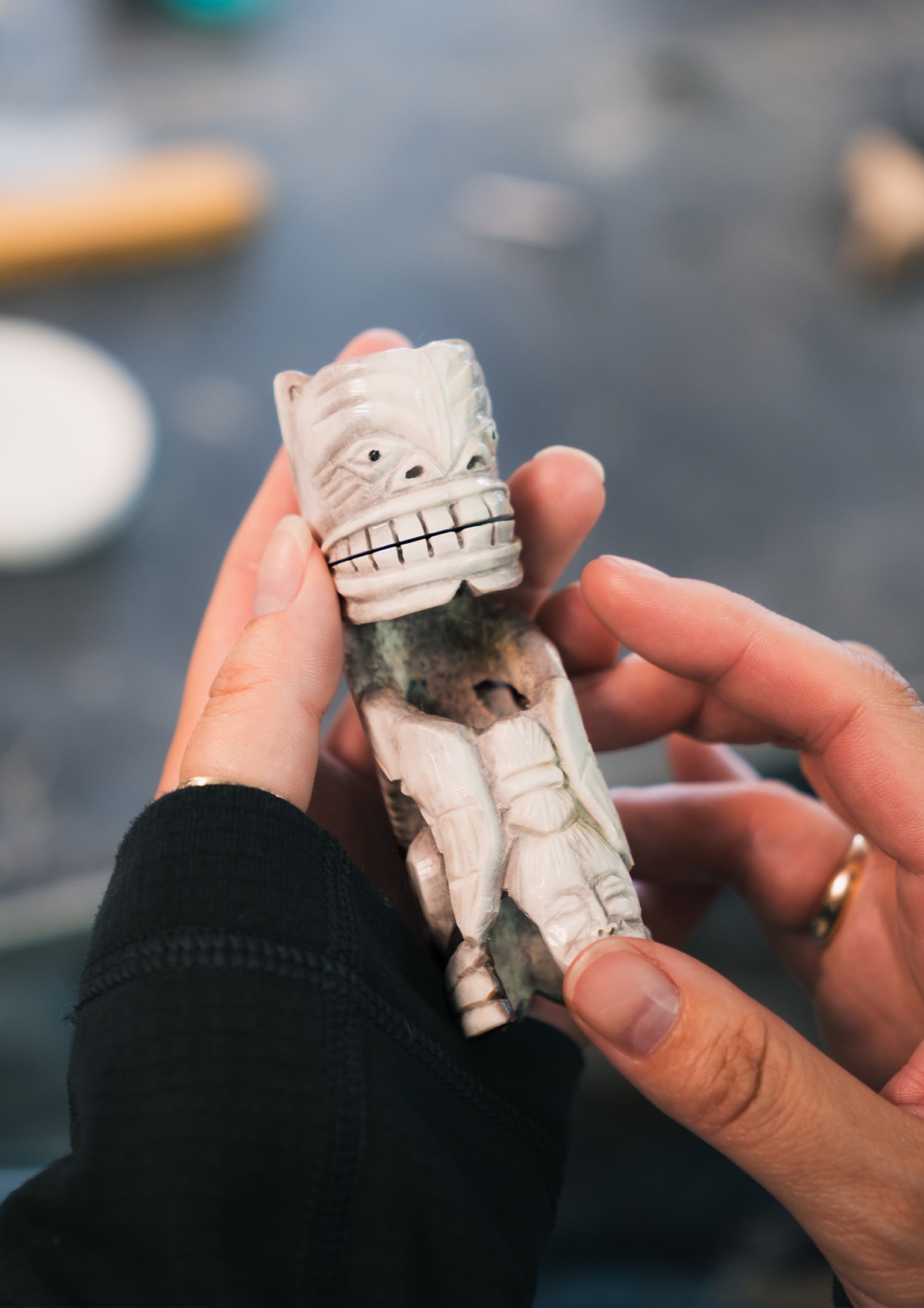


Traditional Customs
While whale hunting might sound slightly barbaric to outsiders, it’s a critical part of Greenlandic life. A culture of resourcefulness, Greenlandic people take what nature offers them and, in return, use it to pay respect to the spirit beings.
One example is the tupilak, a totem traditionally crafted from bone, skin, hair, and sinew. Greenlandic for ‘the ancestor’s spirit’, tupilaks were initially created by shamans and used for protection against enemies. Often depicted with frightening faces, these amulets were said to have spiritual powers that granted the wearer additional strength.
Nowadays, it’s not uncommon to see tupilaks for sale in shop windows, viewed as souvenirs and mementos for travellers. For Dines Mikaelsen, a bone carver at Ajagaq in Nuuk, making tupilaks as keepsakes isn’t just a way to make money, but a real, tangible connection to his ancestors.
“I do carvings for my ancestors; for my culture, for my spirit.“
“Bone carving is quite important to Greenlandic people because it’s something that our ancestors have done for us, to show the culture and also, how they survived. In the olden days, they didn’t have paper,” he tells me.
“It’s quite important to know how they feel. I still like to show the world why I am doing this, because I love my country and my country’s story. I want to show how my ancestors felt when they did carvings.”

Greenland’s Views on Tourism
Dines’ views speak to the ever-shifting sentiment around tourism in Greenland, which extends beyond just economic prosperity. A proud, reserved people, the Greenlandic are deeply cautious of the impact of overtourism. There is a very real fear that driving hordes of temporary visitors to the land will not necessarily bring about prosperity, but the commodification of their culture.
“Greenland can’t quite agree on how to deal with cruise ships,” Niels tells me. “In Nuuk, where we have around 19,000 inhabitants, a cruise ship can arrive with 5,000 people—and that’s just passengers, not including crew. That’s a quarter of the entire settlement population arriving in one day.”
As Niels explains, the frictions stem from a clash of cultures. Greenlanders exist in a fluid state of natural harmony, taking only what they need and wanting for little. So when thousands of visitors descend on their otherwise tranquil homes, it can be overwhelming.
“People really don’t like cruise ship guests because they are really badly behaved. For years, tourists were not welcome in Greenland,” Niels explains. “That’s starting to change now, particularly with the younger generation. Nowadays, it’s cool to know more about your country; there is a pride in being a skipper for tourism boats that wasn’t there before.”

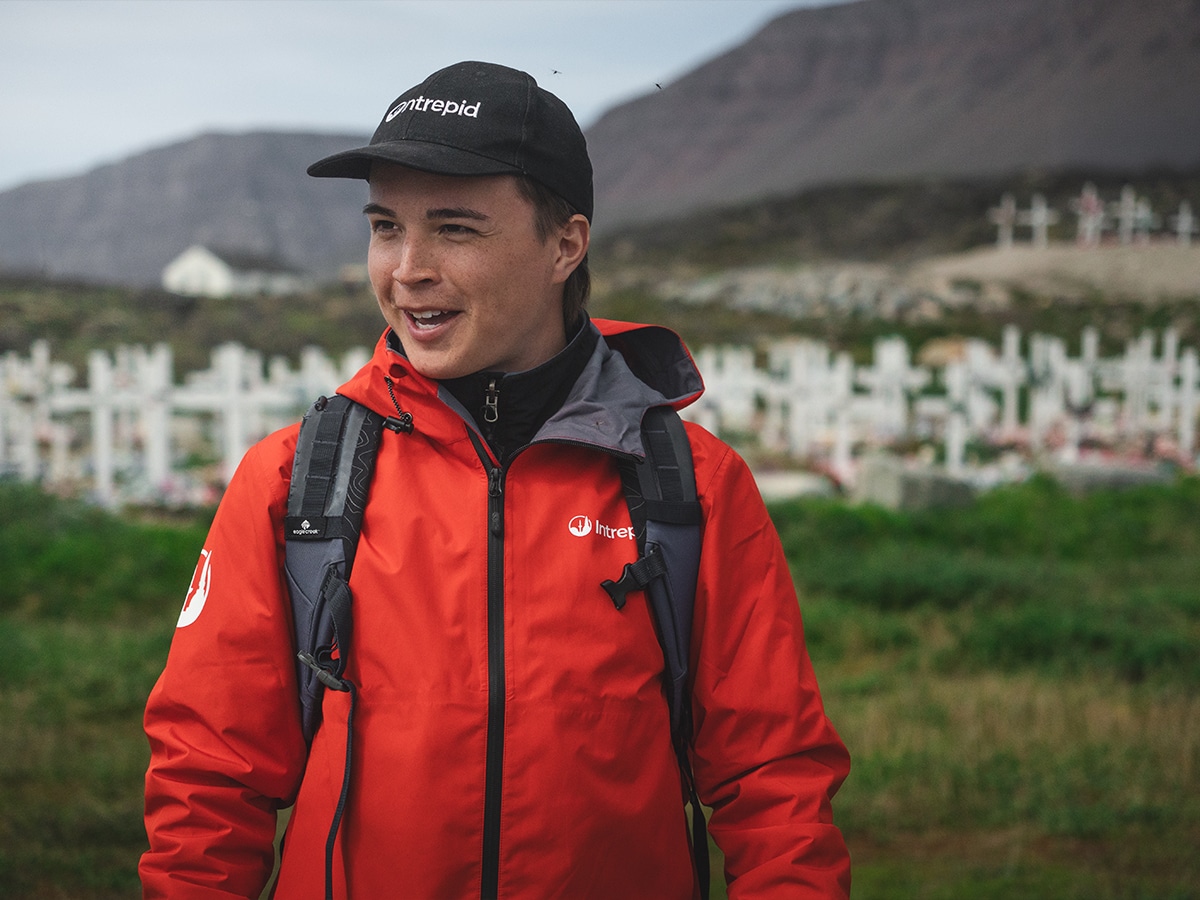
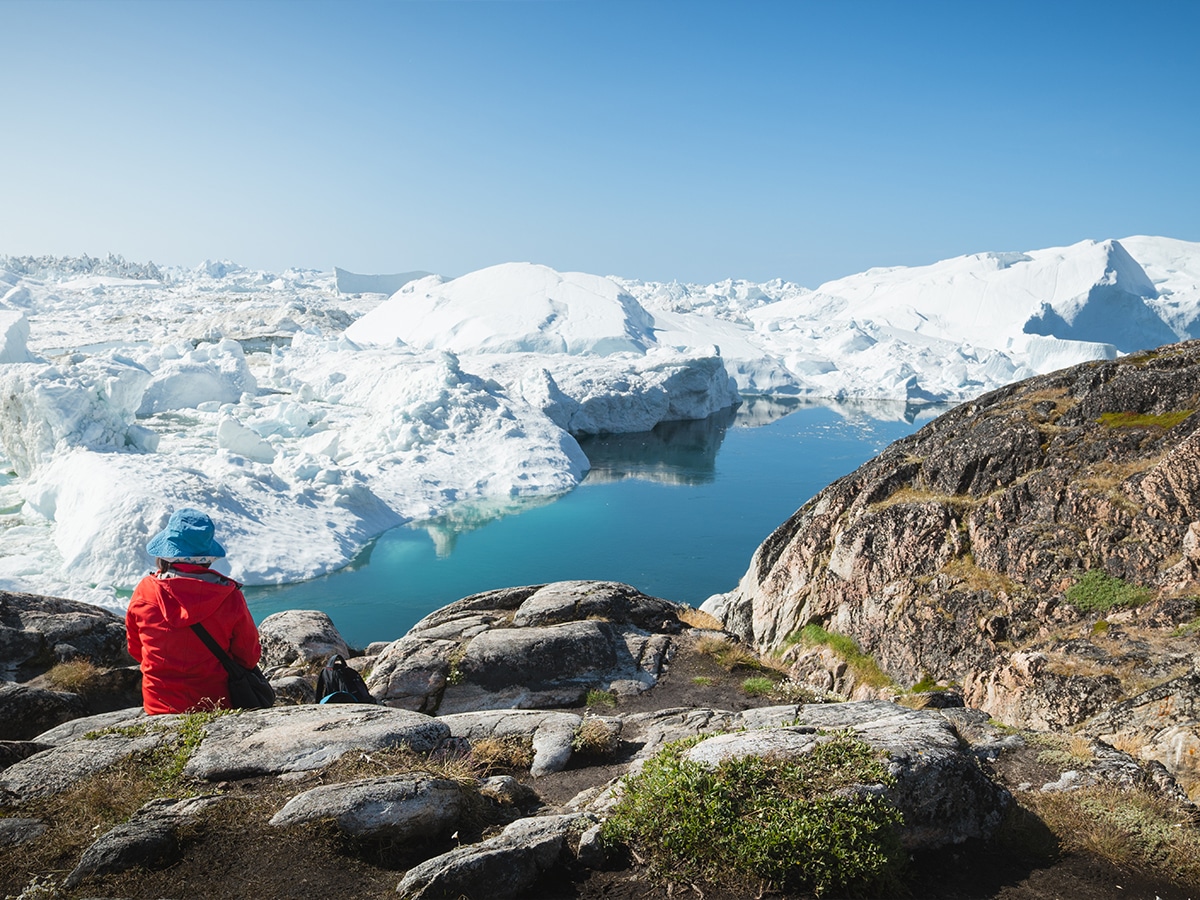
New Hopes for Tourism
In response, Intrepid Travel, buoyed by a new partnership with local tourism body Visit Greenland, is working on the concept of ‘Better Tourism’. A lighter footprint, fewer crowds, and more connections.
Leaders like Niels are part of the new generation of tourism operators who understand the delicate balance between financial independence and cultural preservation. A guide with over seven years’ experience, the proud Greenlandic man is playing a pivotal role in shaping the future of Intrepid Travel’s domestic efforts.
“It is promoting the local culture through locals, and it is promoting a sustainable way to live off of tourism while getting the true stories, in a sense, from real locals. It was important to me that they wouldn’t have a massive environmental impact.”
“They wouldn’t come and build grand hotels and hire a bunch of guides from Australia to do their guiding. They wanted a local who could tell their own story, their own version of it in their own manner, and really invite people to Greenland in the correct way.”

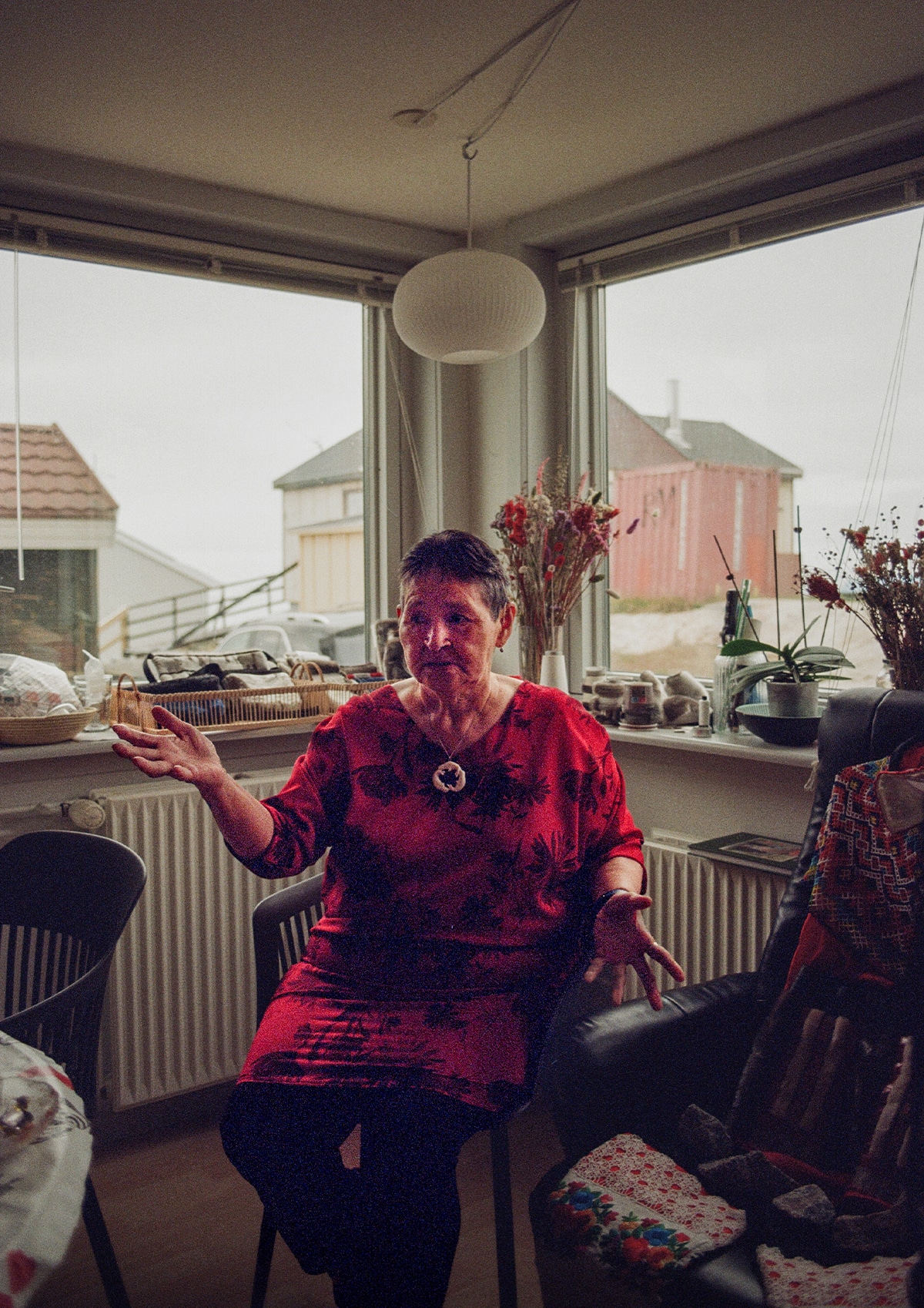
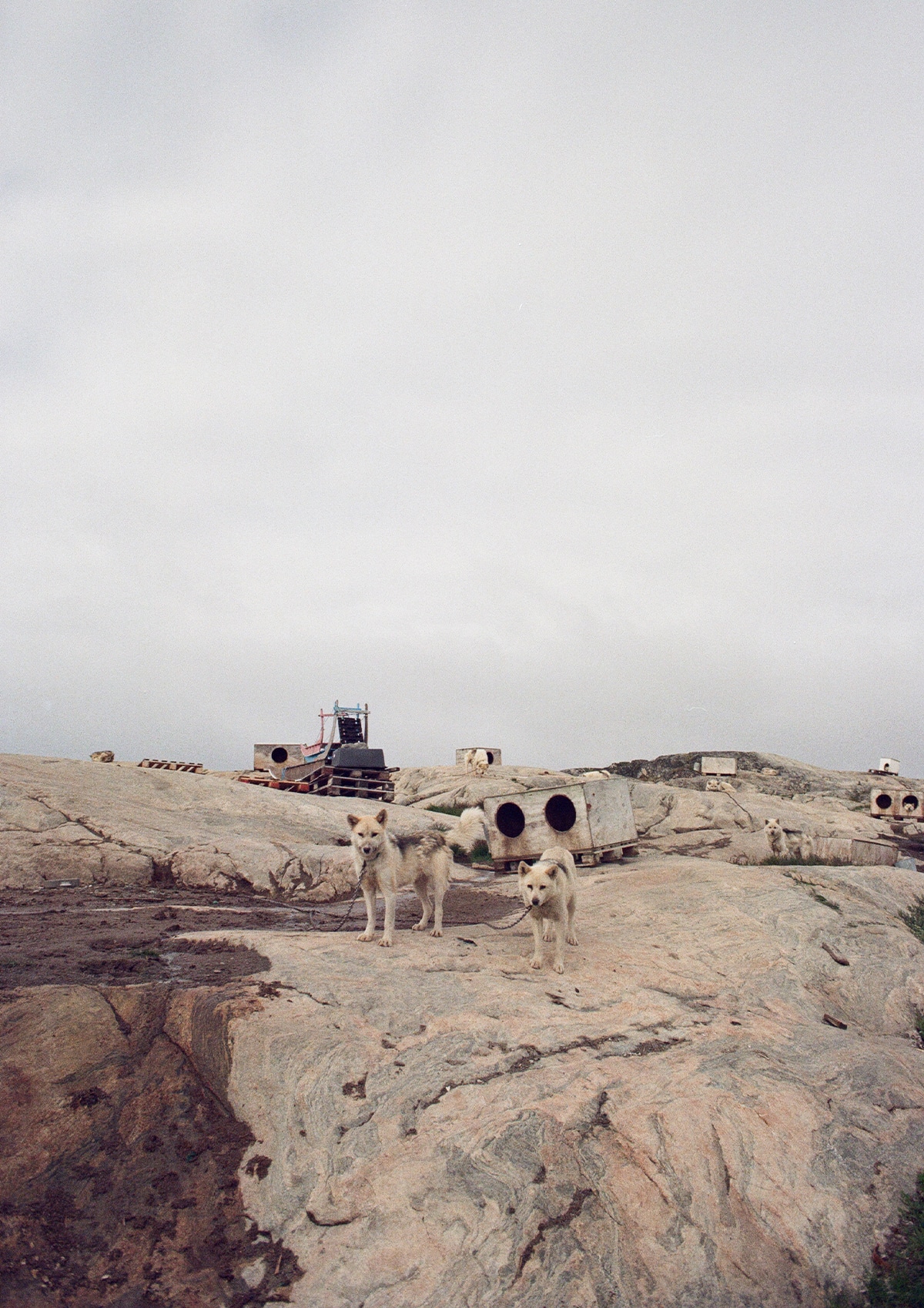
Kaffemik
Inside a tiny fibro house in Nuuk, I get a chance to see that story up close. Shoes line the outside of the hallway, and the smell of crowberries and sweet bread lingers heavy in the air. This is the hallmark of kaffemik, a social institution that has characterised Greenlandic celebrations for centuries.
Where other cultures venture out to mark a birthday, marriage or achievement, Greenlandic people prefer to stay in. The honoree will often spend days preparing for the event, cooking sweets like crowberry muffins, apple tarts, and marzipan cookies, before inviting the entire community over to celebrate.
This time around, there is no wedding and no one’s birthday, but there is still cause for celebration. Local Pauline Jensen has invited our ragtag team of journalists for a kaffemik meeting, eager to show off her culture’s traditions. We’re greeted by carafes of angelica-infused water, tea, coffee, and a delightful bread pudding that reminds me of a dessert my nan used to make at Christmas.
The food is simple but delicious, warm and inviting; however, it’s the conversation that makes kaffemik so special. Like a window into how connection keeps the community strong, this social institution provides a chance to share stories, old and new, in a place where the weather may separate but the spirit brings together.

Travel Small
Back at the Nuuk Lokalmuseum, Ujammiugaq prepares for an influx of new guests arriving from New York. The Greenlandic capital has become an unexpected hotspot for American tourists in recent times, following U.S. President Donald Trump’s repeated attempts to purchase the autonomous territory from Denmark. The visitor numbers are swelling, but with just 149,000 total visitors in 2024, Greenland still sees a fraction of tourists compared to neighbouring Iceland, which received almost 2.3 million visitors in 2024 alone.
As she arranges the pieces in the museum and prepares refreshments, Ujammiugaq looks out at the ocean, just metres from where we stand. Her eyes dart downwards, and she flashes a smile. Stories like Sassuma Arnaa’s have helped to bridge generations of Greenlandic people and, perhaps even more remarkably, have remained largely unchanged for centuries.
“In order to preserve,” she tells me, “we also need people from outside to understand what we have going on so they can help us preserve our culture, our history, our stories, our monsters. That would be why it’s so important for me to retell our stories.”

One of her favourites, Ujammiugaq tells me, is that of the orphan boy Kaassassuk. Taunted viciously throughout his childhood, Kaassassuk meets the spirit Lord, who grants him enormous physical strength. Fuelled by vengeance, he misuses this power and it’s only when he’s defeated by a stronger, more gentle man that the true consequences of his actions are revealed.
“He ends up losing everything,” Ujammiugaq says. “I love that story because it’s a way to remember not to misuse whatever powers you might have. And I love the fact that there is a statue depicting that story situated right across from our government building. I like for them to be reminded that even though you are in power, you should not misuse that power.”
The historian believes wholeheartedly that by opening the country up to the world, travellers will gain an understanding and appreciation for the customs of yesteryear and the resilience that characterises the Inuit.
“To bring new people in, although sometimes intimidating, can also be a way to open up the world. I think that would be a positive.”
“I really hope for people to understand how resilient we are as people,” she explains. “When people come here, they will often see very secluded little communities. They might seem fragile, and to some extent they are, but I want people from outside to understand how resilient that can also be; how strong communities are.”

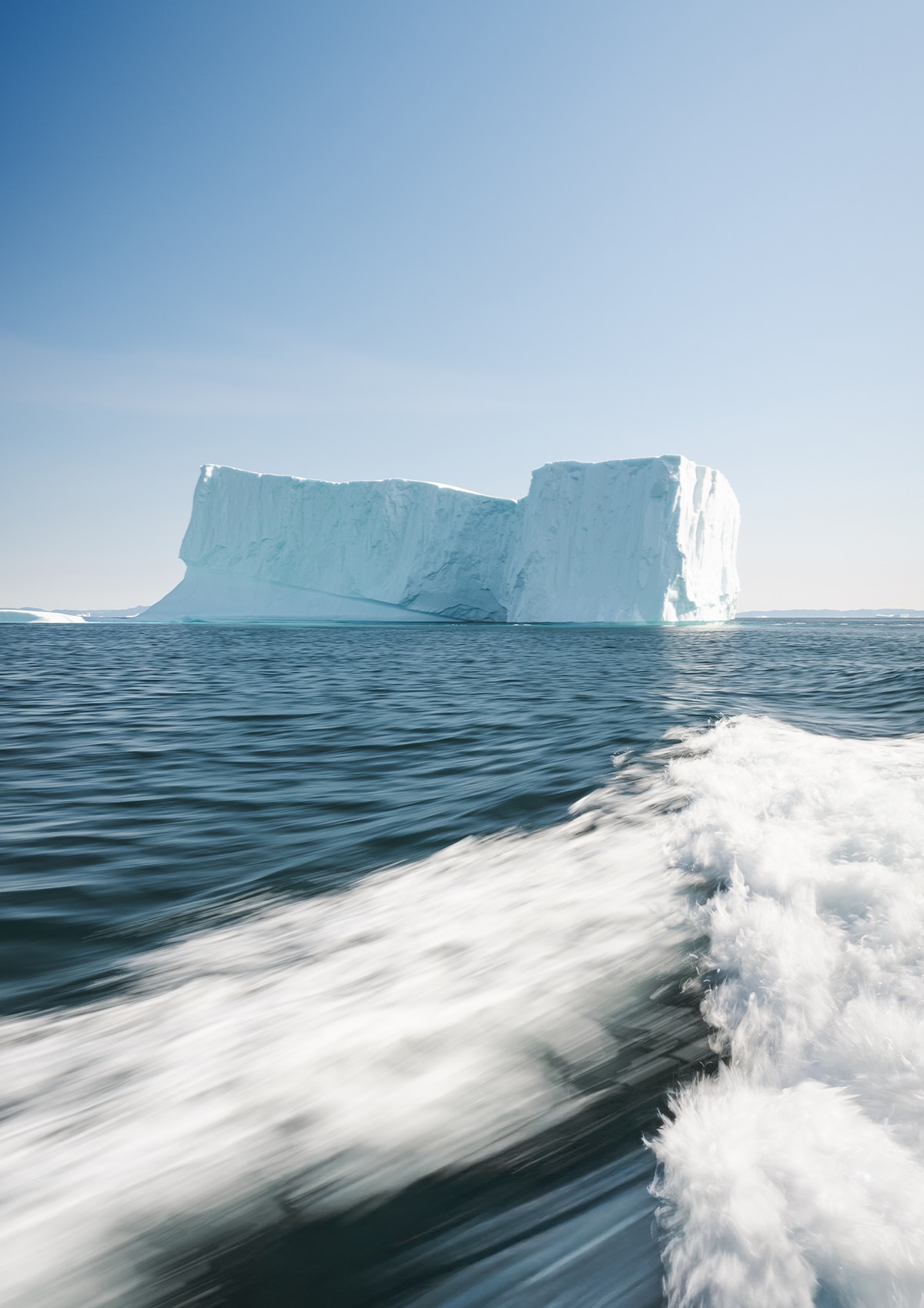

Geographical Challenges
Being able to visit those communities has always been a challenge. Travelling across Greenland, particularly during winter, has traditionally been next to impossible, and the infrastructure to facilitate movement and accommodation simply didn’t exist, but things are changing.
Just last year, a new international airport opened in Nuuk, with plans to launch in Ilulissat in the coming years. Logistically, Greenland is opening to the world, but there are still some major barriers. Flight paths across the country are extremely susceptible to wind and cloud cover, with countless flights delayed, cancelled or rerouted to accommodate.
For us, that meant two unplanned and unaccounted-for nights in Ilulissat; our aircraft unable to depart due to bad weather. The superstitious part of me labelled it God’s Will, but Niels decried that assessment.
“We don’t have gods in the sense that Christianity has the one and true God; we have nature,” Niels says. “Nature kind of does what nature does. When it’s good weather, you take advantage of that and you use what nature gives to you. And if it’s bad weather, you just accept that it is bad weather and you say, ’It is what it is’. You learn how to live alongside nature, almost in harmony.”
When travelling to Greenland, it’s important to remember that, as Niels suggested, time is fluid. You don’t always get to choose what you do; rather, you take what the day presents you with. It’s part of being adaptable and part of Greenlandic life. Thankfully, there is no shortage of natural wonders on offer.
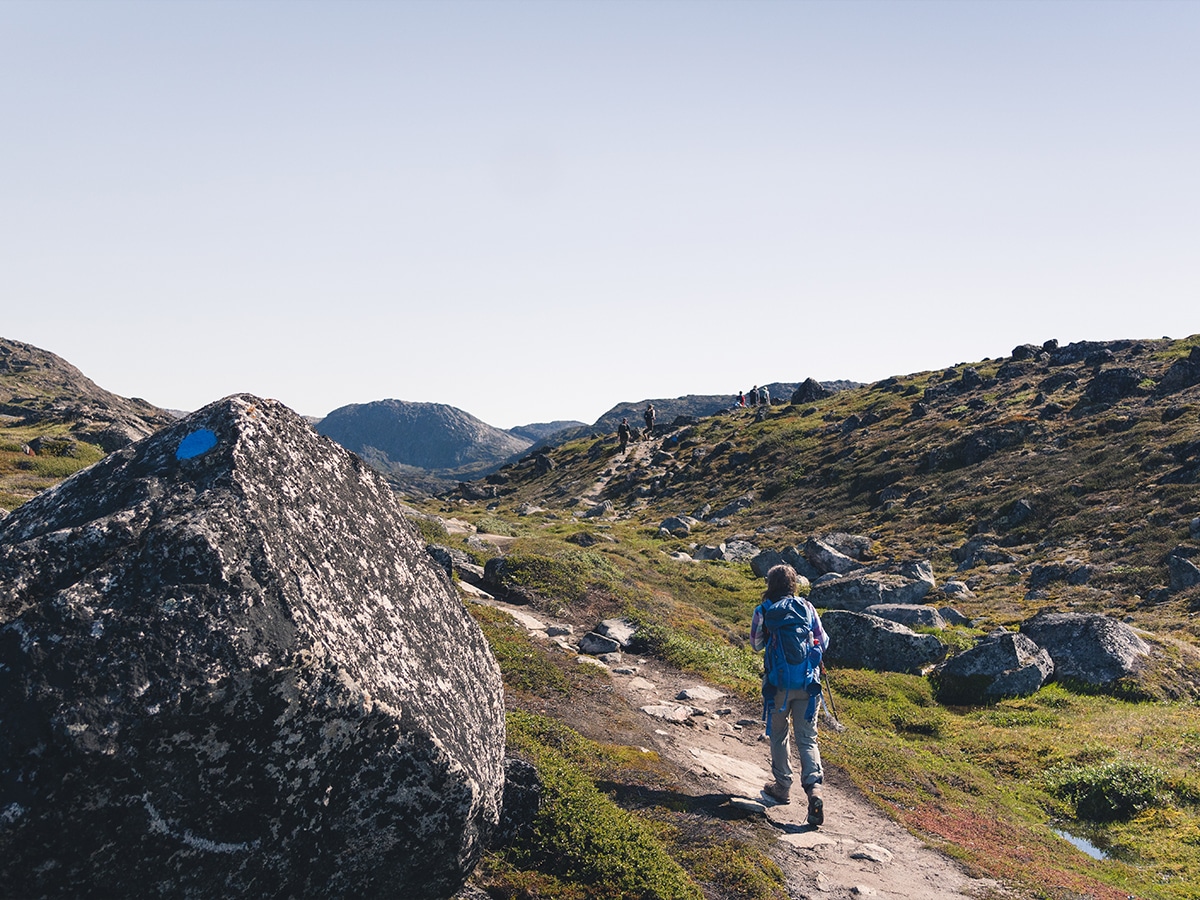
Nature
Throughout the week, we hike almost every day. We venture to Sermermiut, an old Inuit settlement that was active for over 4,000 years, through abandoned quarries and into ancient valleys brimming with mosquitoes. The views are spectacular. Like an Avercamp smashed into a Bierstadt, rocky mountain vistas meet sheets of white ice at a fractured horizon.
“One of the many things I enjoy about being Greenlandic is my access to nature and my closeness to it,” Niels tells me when we get to the end of the Blue Trail, a steep 7km trek that takes you through a deep ravine with high cliffs on either side. “It’s calming to be in a place where you don’t have phone service and you can take things at your own pace.”
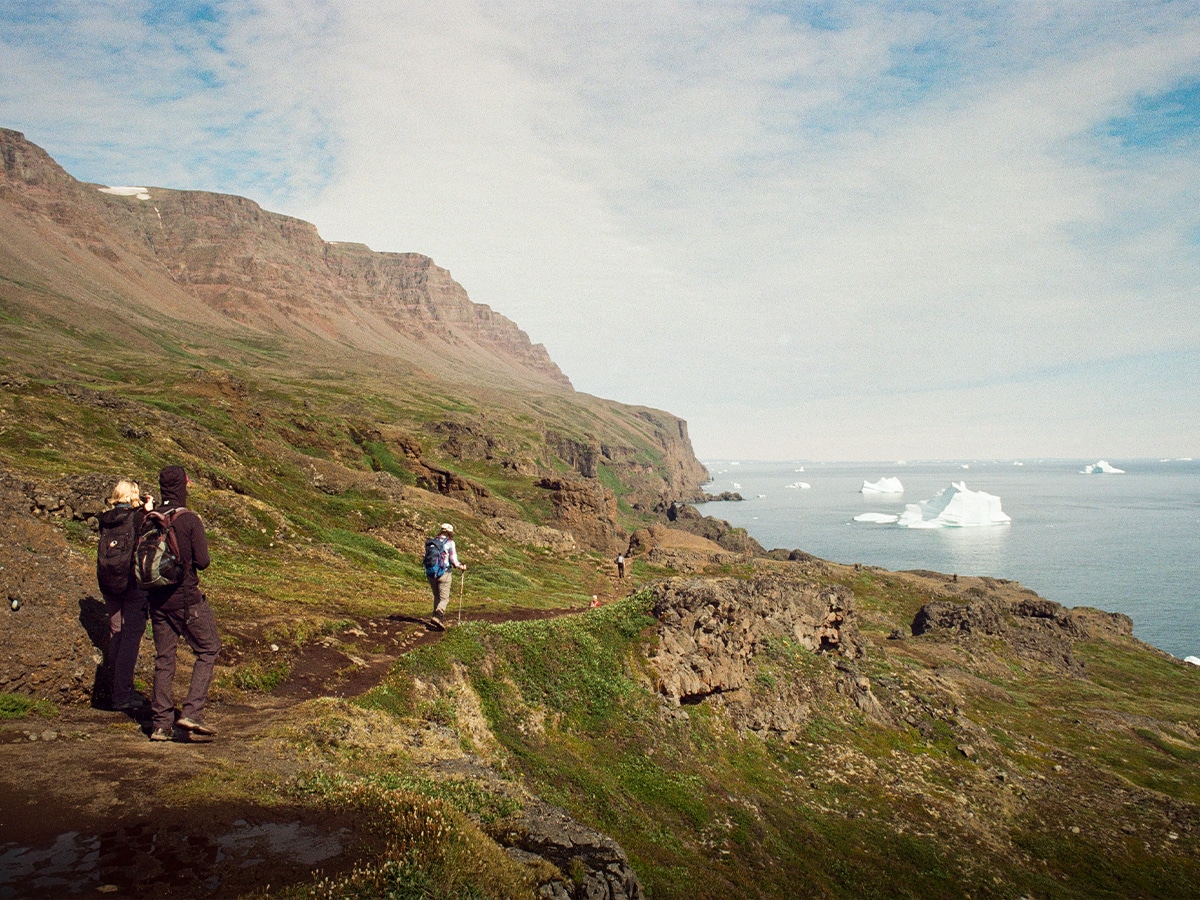

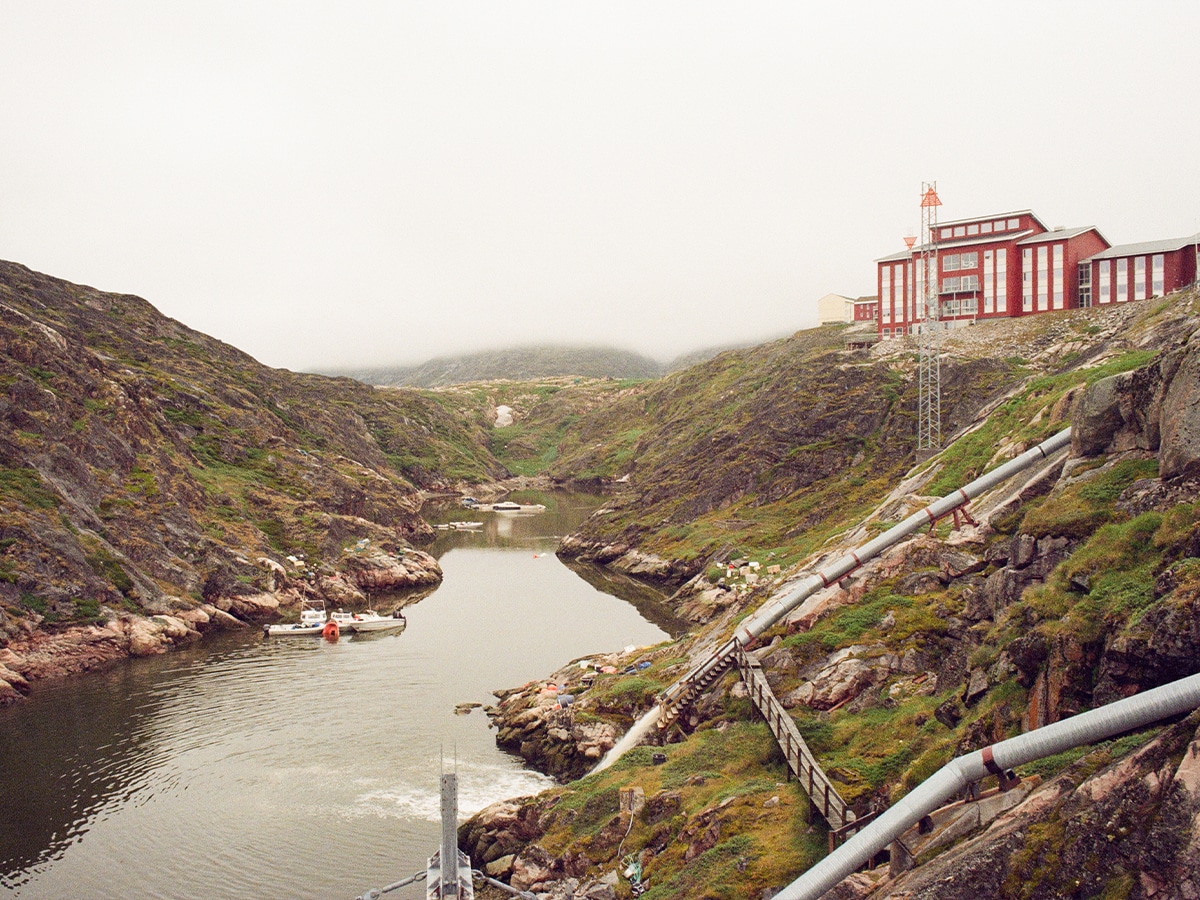
Separated from the group, I take a moment to ask him what he hopes people who live in Greenland get out of the experience. His response surprises me.
“I want them, first and foremost, to be fulfilled. I want them to gain that sense of adventure, exploration and the wonder of the Greenland country,” he explains. “I want them to have seen something that they really liked about my country, my island, our island, but I also want them to leave smarter, more knowledgeable than when they arrived. I think that’s an important part of travelling. It should be the main reason for travelling; knowledge and leaving smarter than when you came.”
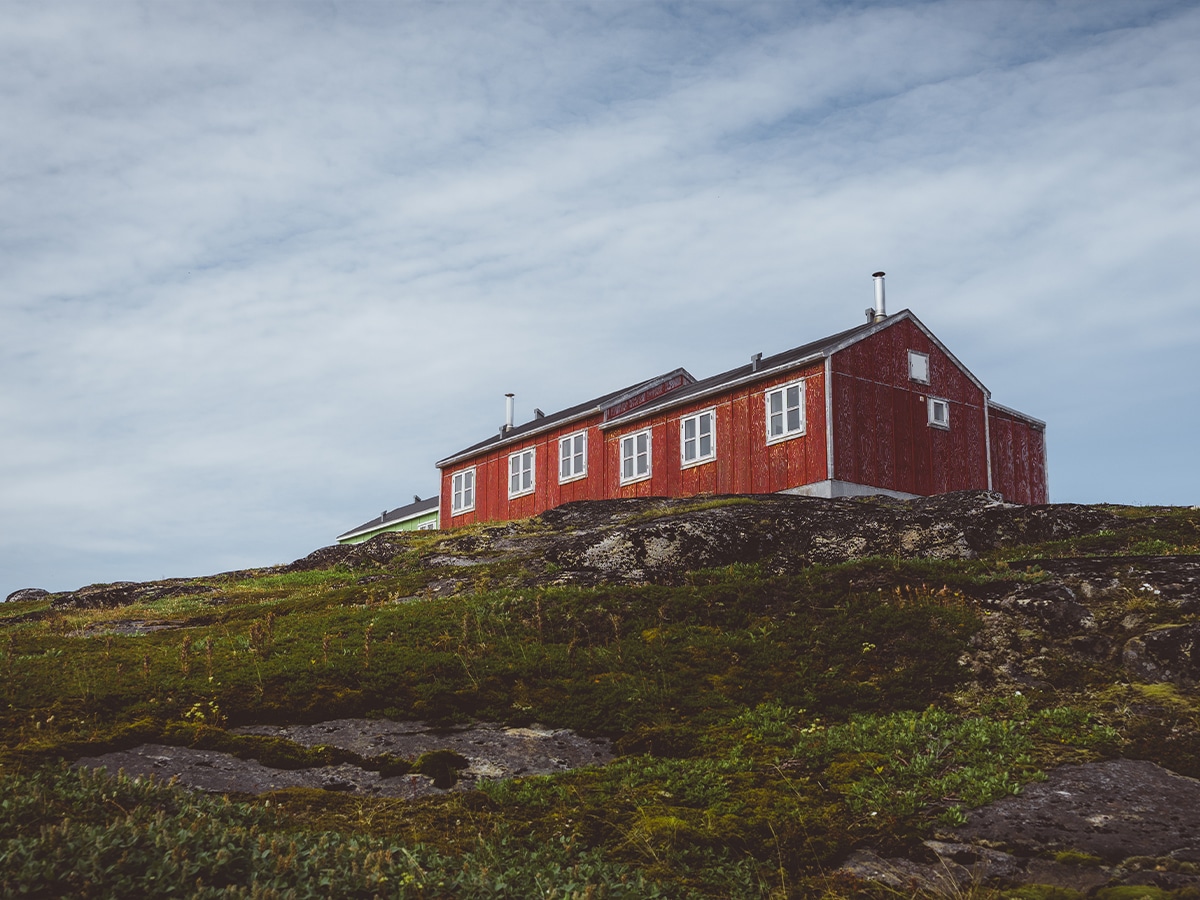
A Joint Mission
Back in Ilulissat, as we wait for a connecting flight that may never come, I am reminded of the story of Kaassassuk. Reflecting on the past week, the lessons I’ve learned, and the fragile nature of Greenland’s remarkable embrace of the natural world, I can’t help but feel a strange responsibility to carry this country with me.
Much like the icebergs that so frequently caught my attention, there is much more to Greenland than meets the eye. On the surface, it might seem raw and wild, but dip just below and you’ll find something rich, vibrant and rooted in thousands of years of ancient tradition.
It’s become clear to me that a shared devotion to survival drives Greenlandic culture. Having seen the landscape, broken bread and shared stories with the locals, I understand now that the anti-tourism ethos that permeates the country is not an aversion, but a vulnerability.
Each person who has had the privilege of visiting this magnificent place now holds its destiny in their hands. And much Kaassassuk, we must learn to be gentle and kind with its future or risk losing everything.
The first Intrepid Travel Greenland tours are expected to launch in June 2026. For more information on the trips and how to get to Greenland, visit the Intrepid Travel website or consult Visit Greenland.
DISCLAIMER: The author of this article, Nicholas Hall, was invited to visit Greenland as a guest of Intrepid Travel. All reviews remain independent and objective. For more information on how we test products, view our editorial guidelines here.
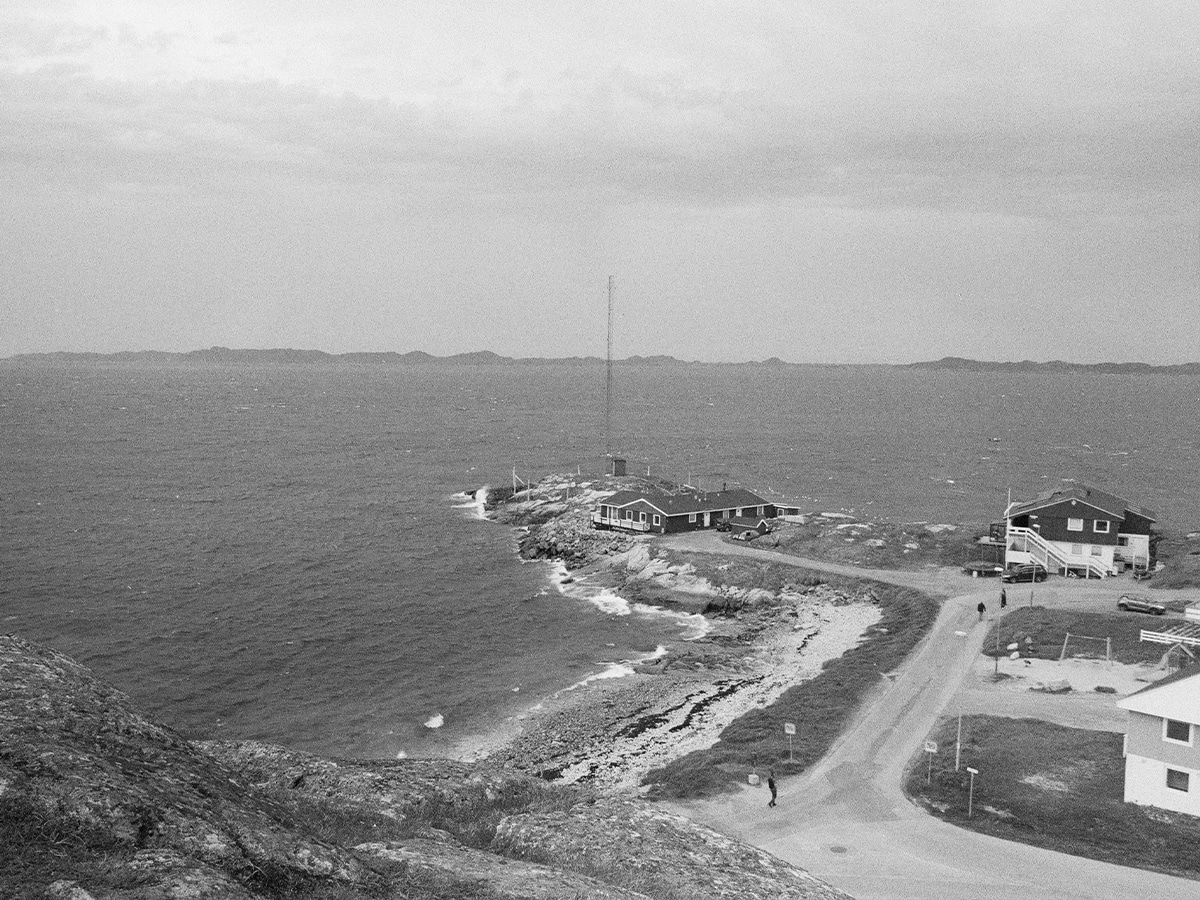
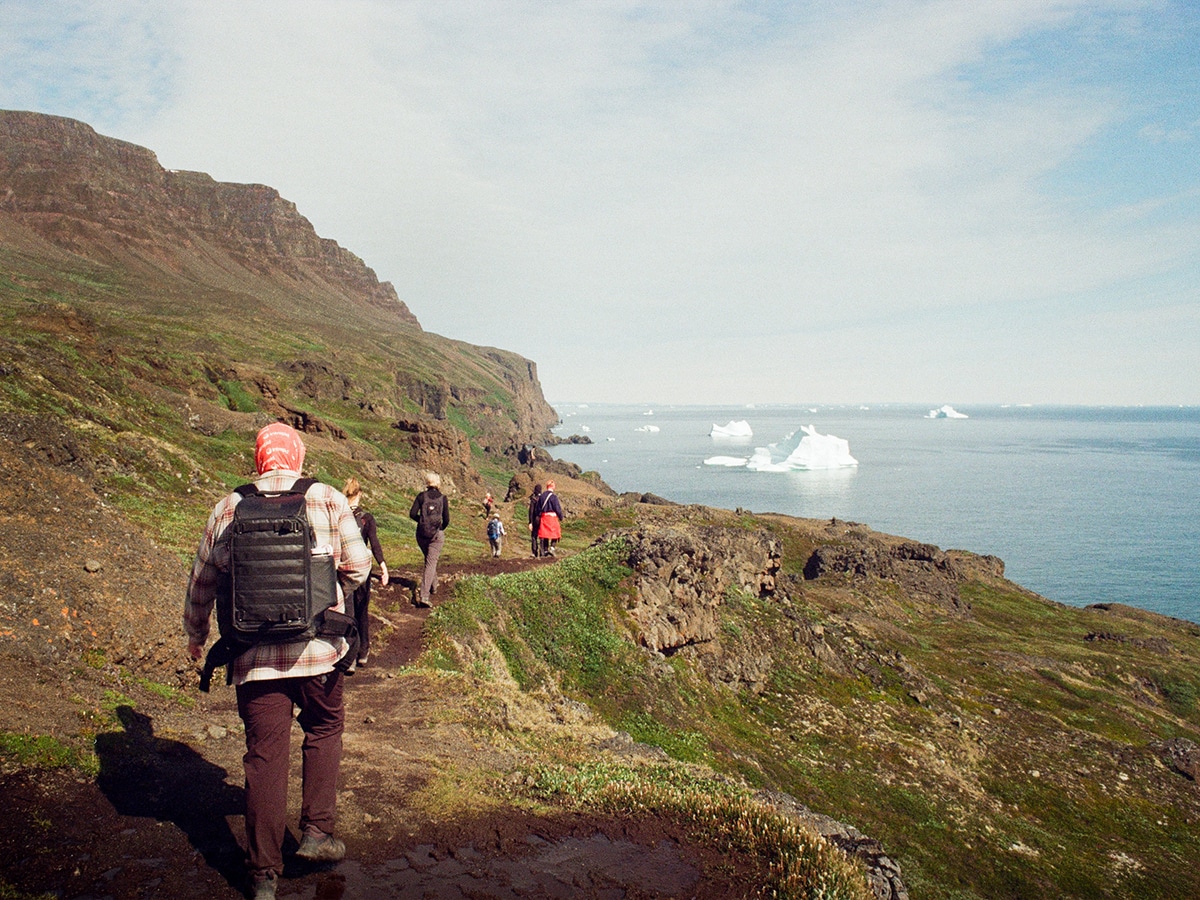

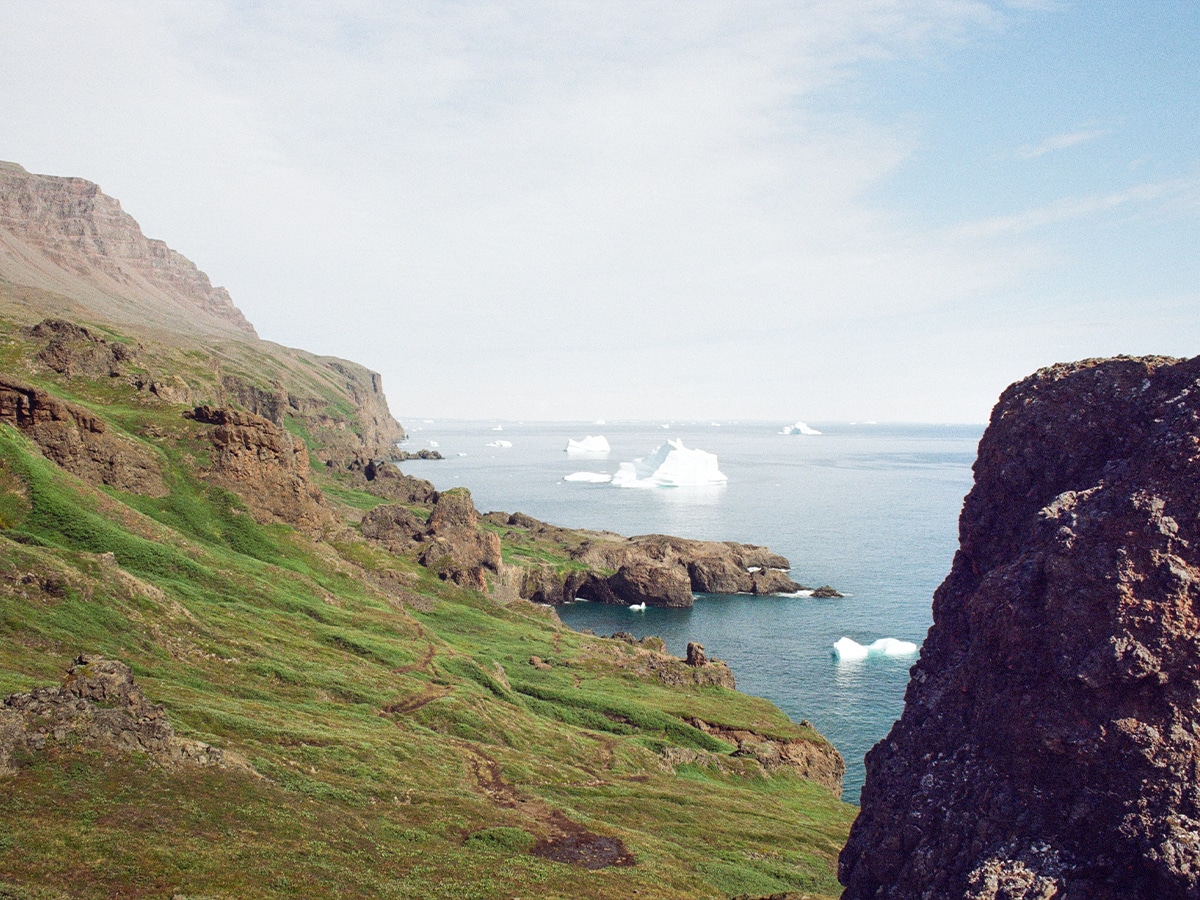
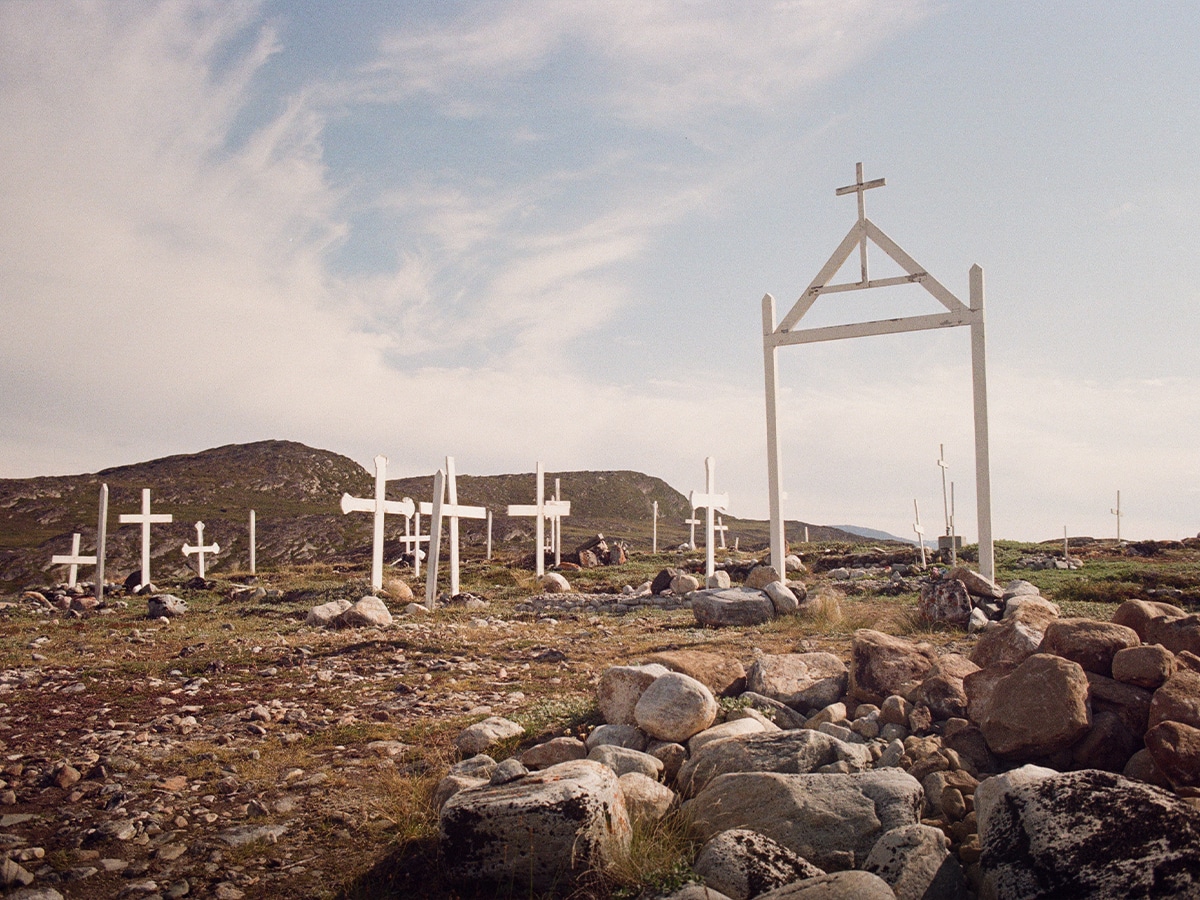






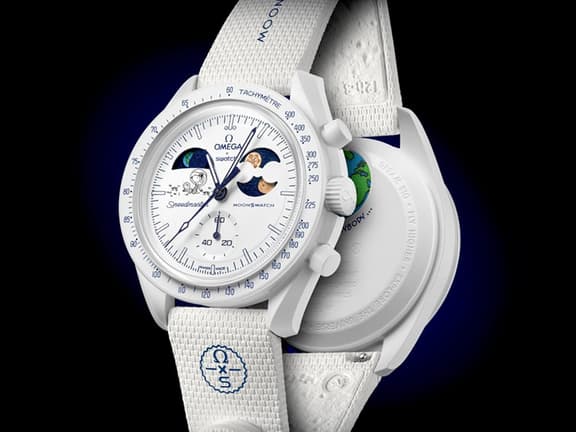
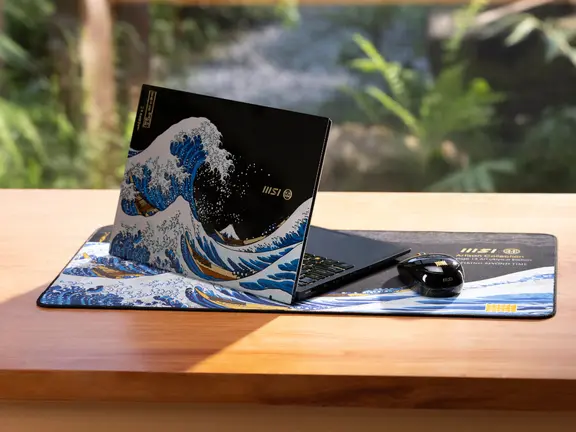






















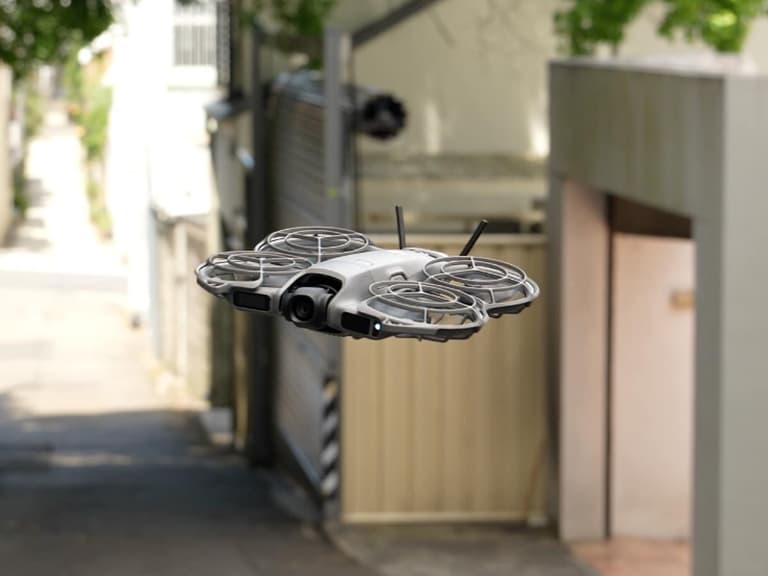
Comments
We love hearing from you. or to leave a comment.